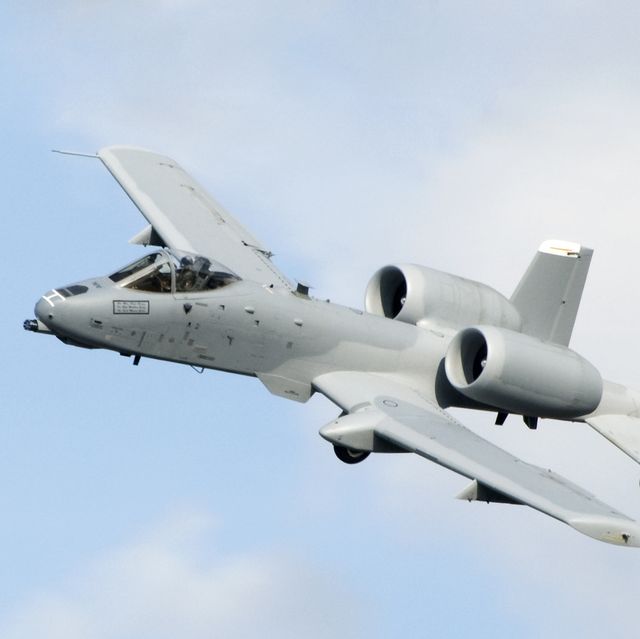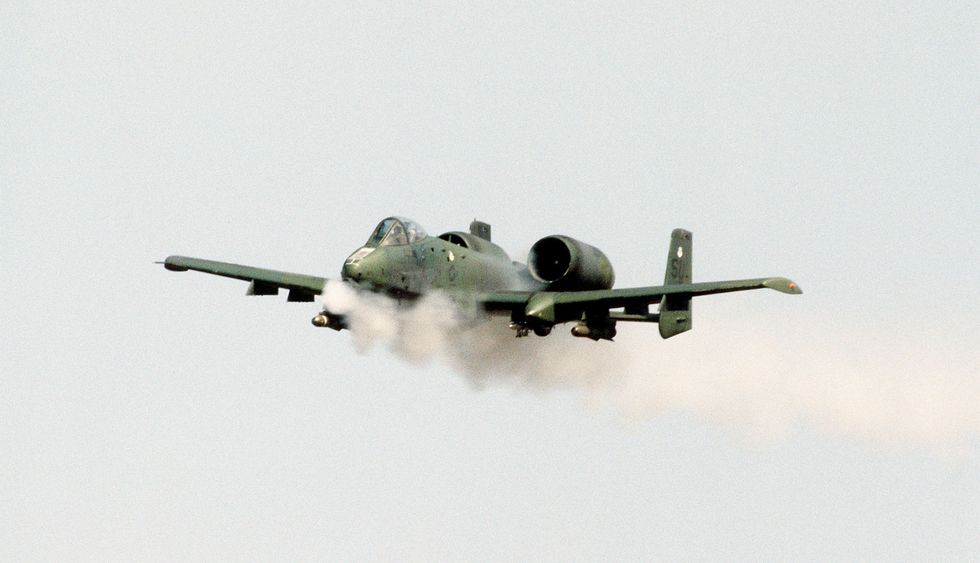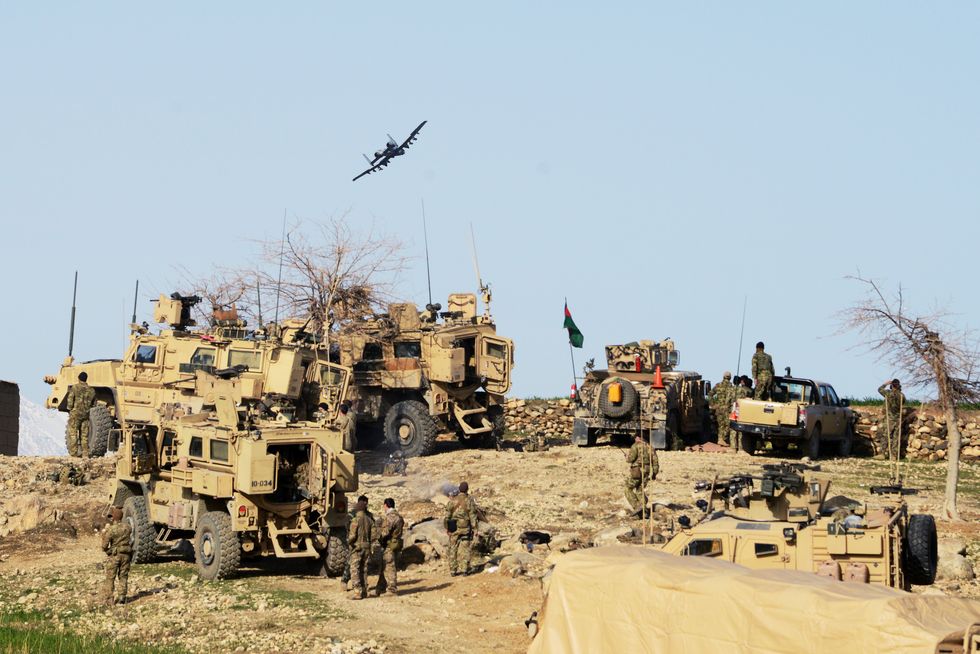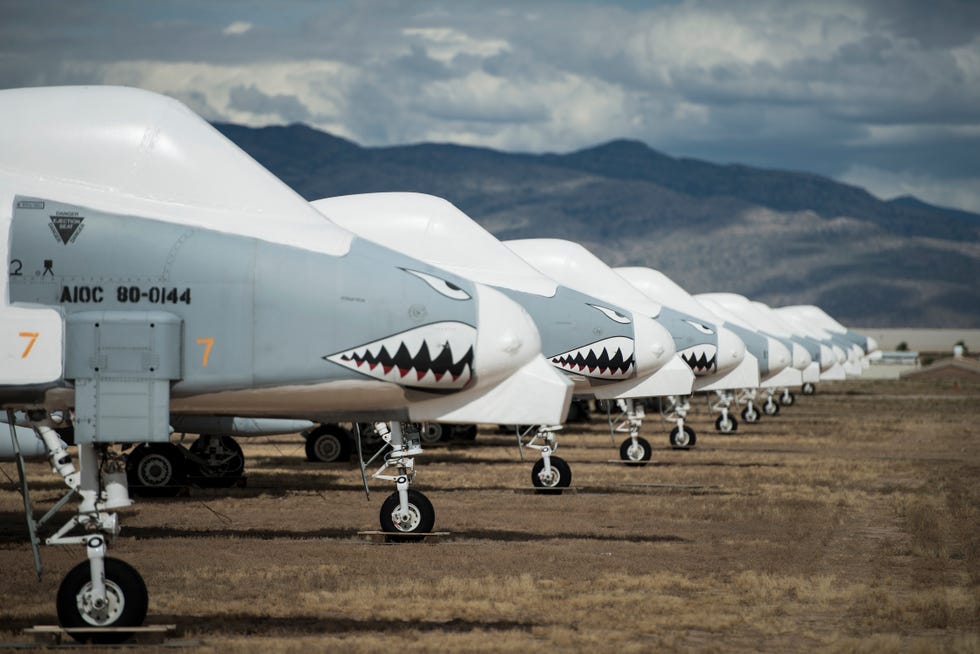- The U.S. Air Force is beginning to retire its remaining force of A-10 Thunderbolt II close air support attack jets.
- The aircraft has been saved from the chopping block numerous times by a loyal, and politically powerful, fan base.
- The aircraft is not survivable above the high intensity battlefields it was designed to fight over, and the war in Ukraine is making that crystal clear.
The U.S. Air Force is retiring 21 A-10 Thunderbolt II attack jets this year, and the current Chief of Staff of the Air Force thinks the plane will be entirely gone before the end of the decade.
The A-10, built for the battlefields of Cold War Europe, saw extensive action over Iraq and Afghanistan, where it became popular with troops on the ground. The Air Force says the “Warthog,” as it is affectionately known, is simply not survivable against modern air defenses.
It’s Finally Happening
Defense One reports that CQ Brown, Air Force Chief of Staff, said the retirement of the 21 jets is just a start and that the remaining aircraft could be retired within “five, six years.” Brown made the remarks at the annual Air Force Association gathering in Aurora, Colorado. According to Air and Space Forces Magazine’s 2022 almanac, the Air Force has 281 A-10s, with 141 in the active Air Force, 55 in the Air Force Reserve, and 85 in the Air National Guard.
The Air Force has recently finished re-winging its remaining A-10 fleet, which was cut substantially after the end of the Cold War. The aircraft, first fielded in the 1980s, have held on due to an enthusiastic fan base, which includes veterans and Congressional representatives of districts where the A-10 is based.
The Air Force has tried many times since 1991 to get rid of the A-10, arguing that it cannot survive against modern air defenses. This has been going on for so long—more than 30 years—that the Air Force originally wanted to replace the A-10 with the F-16, but now wants to replace it with the F-35 Lightning II. While the A-10 was able to hold out against the F-16, it will now be replaced by the F-35. (The F-16, of course, is also being replaced by the F-35.)
The Born Tank Killer
The A-10 Thunderbolt II was designed in the 1970s as the first-ever dedicated close air support jet. The A-10 is armed with the seven-barrel GAU-8/A “Avenger” 30mm Gatling cannon, capable of strafing ground targets with armor-piercing rounds the size of Coca-Cola bottles at up to 3,900 rounds per minute. The A-10 can also carry Maverick air-to-ground missiles and JDAM satellite-guided bombs.
The A-10 is also heavily protected against ground fire, with engines outside the fuselage to limit damage from infrared-guided missiles, redundant hydraulic and electrical systems, and the ability to launch chaff and flares against radar and infrared-guided missiles. The A-10’s cockpit includes a “bathtub” made of titanium designed to protect the pilot from shrapnel.
The A-10 was designed to operate over Central Europe, flying low and fast and attacking Soviet tank columns streaming West into the heart of Germany. This was always considered extraordinarily risky but necessary to thin out enemy tank concentrations before they collided with friendly ground forces.
The Slide Into Obsolescence
Many A-10 units were cut after the end of the Cold War, but the A-10 was saved by its performance in the 1991 Gulf War, when it devastated Iraqi armored vehicles. The A-10 also performed in the wars in Iraq and Afghanistan, where its ability to circle over the battlefield, bombing and strafing at will against an enemy without air defenses won it fans among American soldiers and Marines.
Against an enemy with modern air defenses it’s a different story. Russian surface to air missile systems such as the short-range Tor, medium-range Buk, and long-range S-400 Triumf could make quick work of an A-10. China also fields similar systems, such as the HQ-9. Both can also saturate the battlefield with short-range, shoulder-fired, surface-to-air missile systems like the Russian SA-25 Verba and China’s FN-6.
The War in Ukraine has made it clear the A-10’s days are over. This week Gen. James Hecker, commander of U.S. Air Forces in Europe and Africa, stated that thanks to extensive air defenses fielded by both Ukraine and Russia, the tactical jets fielded by both sides are now essentially “worthless” and unable to affect the outcome of battles on the ground. These aircraft suffer from the same limitations as the A-10, the most relevant being the lack of stealth to provide a measure of protection from enemy detection.
The Takeaway
The A-10 is probably the best loved warplane today. Unfortunately, the enemy gets a vote on how the aging jet will perform in combat, and by now technological advances in air defense systems have practically made the vote a veto. The F-35, although armed with an inferior gun and capable of carrying fewer guided munitions into combat, is the only American tactical jet that could still conceivably lend a hand to ground troops in a fight—and survive.

Kyle Mizokami is a writer on defense and security issues and has been at Popular Mechanics since 2015. If it involves explosions or projectiles, he's generally in favor of it. Kyle’s articles have appeared at The Daily Beast, U.S. Naval Institute News, The Diplomat, Foreign Policy, Combat Aircraft Monthly, VICE News, and others. He lives in San Francisco.
















